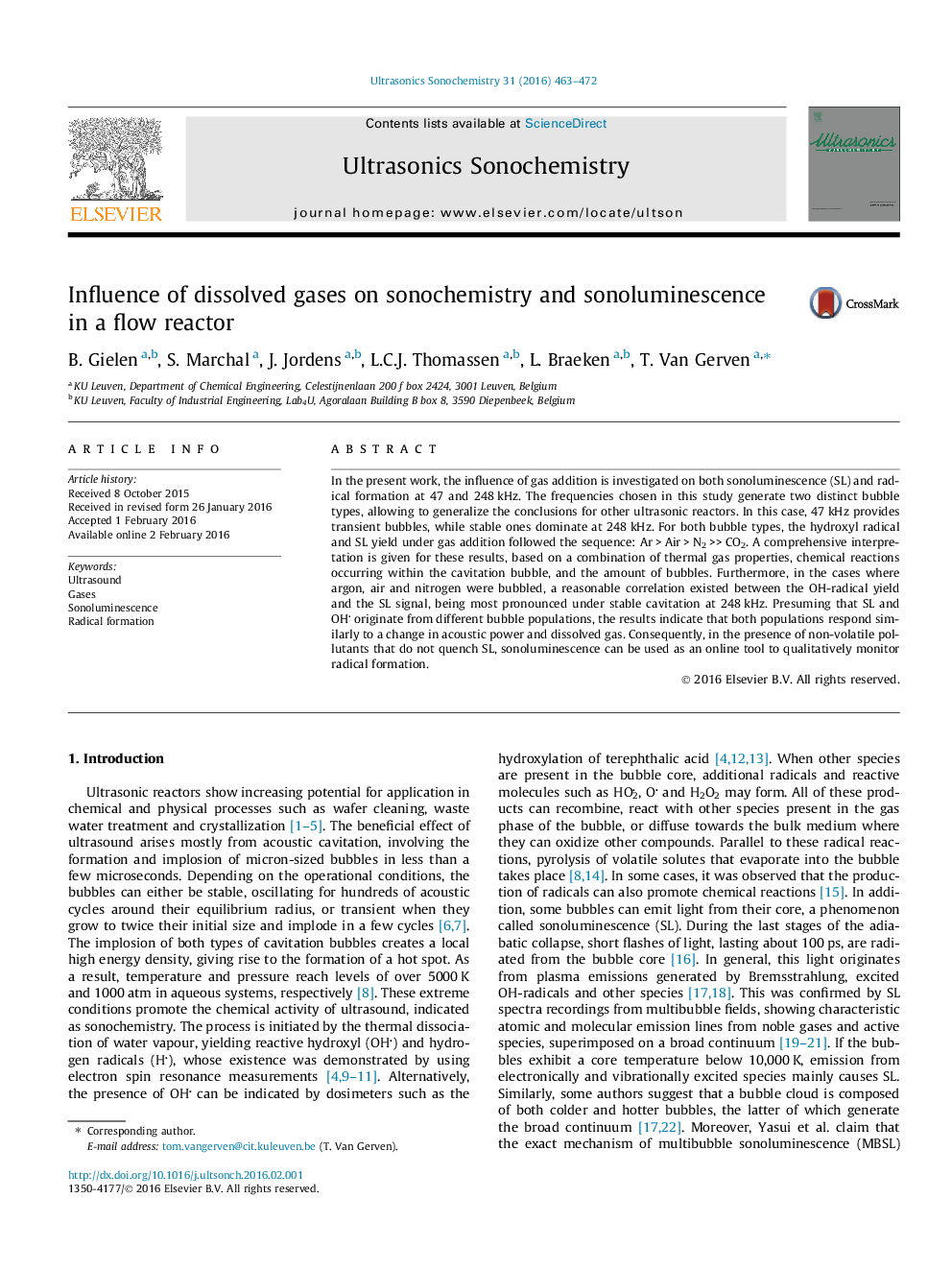| Article ID | Journal | Published Year | Pages | File Type |
|---|---|---|---|---|
| 1265695 | Ultrasonics Sonochemistry | 2016 | 10 Pages |
•Same gas sequence Ar > Air > N2 >> CO2 for radical and sonoluminescence yield.•The gas sequence is independent of the bubble type.•Thermal properties, chemical reactions and amount of bubbles explain gas sequence.•Sonoluminescence can be used to qualitatively monitor radical formation.
In the present work, the influence of gas addition is investigated on both sonoluminescence (SL) and radical formation at 47 and 248 kHz. The frequencies chosen in this study generate two distinct bubble types, allowing to generalize the conclusions for other ultrasonic reactors. In this case, 47 kHz provides transient bubbles, while stable ones dominate at 248 kHz. For both bubble types, the hydroxyl radical and SL yield under gas addition followed the sequence: Ar > Air > N2 >> CO2. A comprehensive interpretation is given for these results, based on a combination of thermal gas properties, chemical reactions occurring within the cavitation bubble, and the amount of bubbles. Furthermore, in the cases where argon, air and nitrogen were bubbled, a reasonable correlation existed between the OH-radical yield and the SL signal, being most pronounced under stable cavitation at 248 kHz. Presuming that SL and OH originate from different bubble populations, the results indicate that both populations respond similarly to a change in acoustic power and dissolved gas. Consequently, in the presence of non-volatile pollutants that do not quench SL, sonoluminescence can be used as an online tool to qualitatively monitor radical formation.
